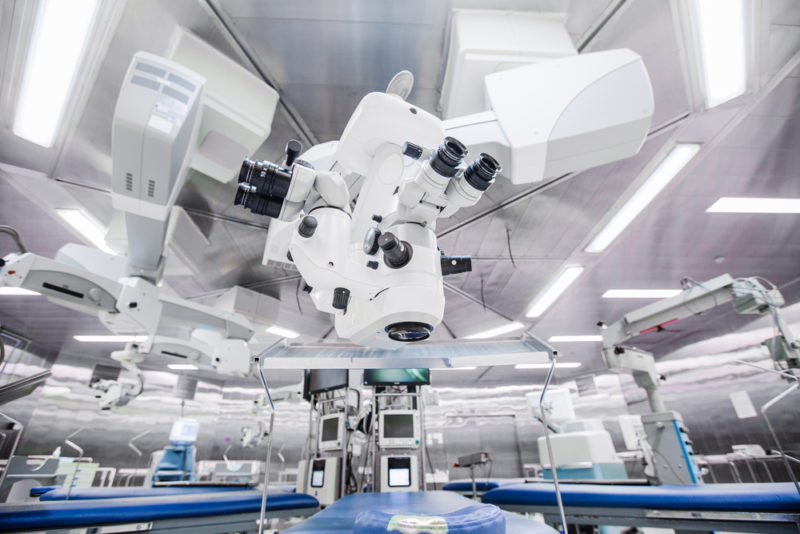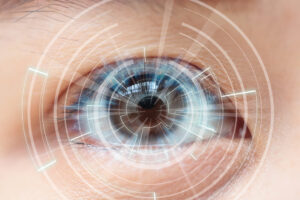
It is incredible to look at the timeline for many of the modern medical advancements and treatments that we have today. While some came about by luck or mistake and others were developed slowly over time, piece by piece.
Well, the history of LASIK eye surgery is a more drawn out story that starts out in the 1940’s and doesn’t receive full approval until 1996. Nearly 50 years of research, technological advancements and waiting were required to see LASIK and other refractive eye surgery techniques through. Here is a look at who invented LASIK eye surgery and its story of development.
Dr. Golham Peyman’s Work
Dr. Gholam Peyman is the inventor of LASIK eye surgery and one of the main contributors who helped bring the use of lasers into the operating room. Born in Iran, Dr. Peyman grew up in Shiraz until the age of 19 when he moved to Germany to pursue his medical studies.
After receiving his MD at the University of Freiburg in 1962. After a few internships and residency stints, Dr. Peyman completed an additional postdoctoral fellowship in retina at the Jules Stein Eye Institute at the UCLA School of Medicine in 1971.
He would later go on to serve as an assistant and associate professor at UCLA and eventually the professor of ophthalmology at the Illinois Eye and Ear Infirmary at the University of Illinois from 1971 until 1987. It was during this time that Dr. Peyman really discovered his interest in the effects of lasers on the tissues of the eye.
He first began studying and evaluating the potential use of a CO2 laser to modify the corneal structure in rabbit eyes. But he found that this laser was inadequate at performing the necessary procedure and eliminating the scarring that occurred afterward.
He concluded that he needed to wait for the development of a suitable laser that would allow for proper ablation of the cornea and that the procedure should be done under a flap of the surface corneal epithelium to help prevent scarring, pain and other potential side effects. He published these findings and his thoughts in 1980.
It wasn’t until two years later that Dr. Peyman read about the work being done by IBM Laboratories with excimer lasers on organic material. Because these lasers were new and very expensive, Dr. Peyman had to wait and until his eventual patents were accepted in 1989 so that he could perform various experimental studies evaluating the effects of excimer lasers with the help of the Physics Department of the University of Helsinki (Finland).
This research and live test procedures were what ultimately led to the invention of the LASIK procedure.
Key Events That Helped the Development of LASIK:
1948– Considered to be the pioneer of refractive surgery, Father Szuniewicz came to the United States in 1948 to continue pursuing his experimentation of corneal reshaping (one of the first to do so) at Yale University in New Haven, CT.
1964– Professor Barraquer made two significant contributions to the development of refractive surgery by inventing two procedures:
- Keratomileusis– an autoplastic procedure for the correction of ametropia (inability to focus images on the retina) in patients.
- Keratophakia– corneal tissue from a donor is frozen, shaped, and inserted into the cornea of a recipient
1970– Dr. Fyodorov invented radial keratotomy, which decreases nearsightedness by a series of incisions into the patient’s cornea at specified depths. The location and number of incisions were dependent upon the amount of nearsightedness.
1973-1983– Three researchers from the IBM Thomas J. Watson Research Center in Yorktown, NY began exploring new uses for the recently acquired excimer laser by the Center’s laser physics and chemistry group. 1987- Dr. Trokel was the first person to introduce Photorefractive Keratectomy (PRK), patented the use of the excimer laser for the use of vision correction and performed the first successful laser surgery in 1987.
1991– Dr. Slade and Dr. Brint were the first ophthalmologists to perform LASIK in the United States. LASIK used a microkeratome to create a flap in the outer cornea that would be folded back so that the excimer laser could be used to reshape the inner cornea to correct for the refractive error.
1996– While LASIK had been performed in the US since the early 1990s, it was an “off-label” use of the excimer laser since it had not been approved by the FDA until 1996.
2001– Dr. Tibor Juhasz, a biomedical engineer, began the movement of uses for the femtosecond laser in medical applications. In 2001, the FDA approved the use of the femtosecond laser, made by IntraLase, in LASIK procedures, which made the surgery completely bladeless.
Advancements improve LASIK and other refractive eye surgeries, but without Dr. Peyman’s revolutionary work with lasers and refractive corrections, we may not have laser eye surgery as we know it today. If you’ve been considering vision correction surgery, please let us help you regain the clear vision you deserve.
At Diamond Vision, our award-winning surgeons are experts in the latest treatments and procedures for vision correction and will determine which one is best for you and your needs. One of our best-known clinics is the Atlanta Lasik Eye Surgery Center. Ensure the highest quality of life after our procedures is our main priority and your complete satisfaction is important to us. To learn more about LASIK or our other procedures, call (888)678-4341 today.
Contact Us
If you have more questions about LASIK procedures, get in touch with us.
Related Blogs

Timing is Everything: When to Consider LASIK After Nursing for Optimal Results
Timing is everything when considering LASIK eye surgery after nursing, and understanding the optimal period for this procedure is vital for both mother and baby.

Cataract Surgery: Restoring Clarity and Confidence
Cataract surgery is a transformative procedure that offers a new lease on clear vision and renewed confidence. As cataracts cloud the eye’s lens, causing blurred

Intralase LASIK Explained: What to Expect Before, During, and After the Procedure
Intralase LASIK is a cutting-edge procedure that offers a safe, effective, and precise way to enhance vision compared to traditional LASIK methods. Understanding what to
